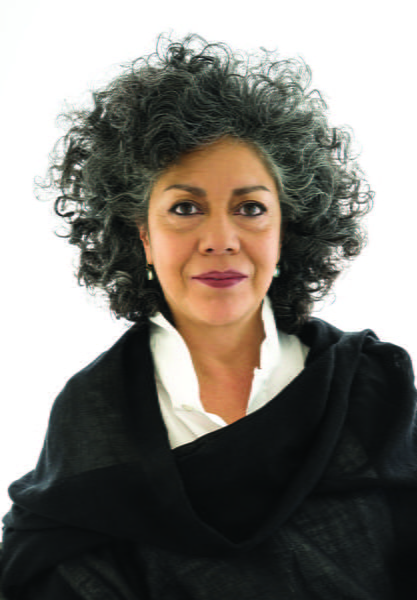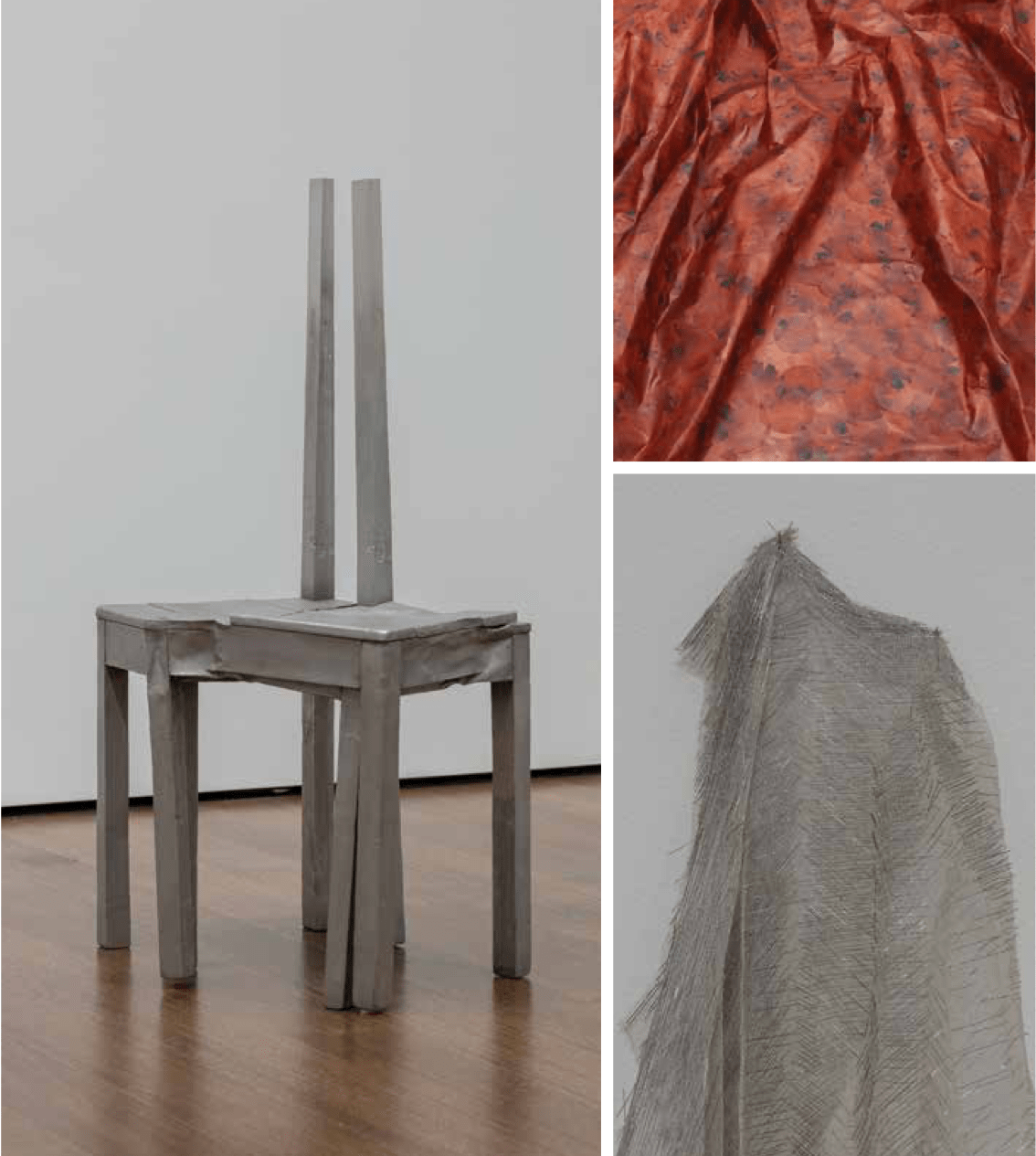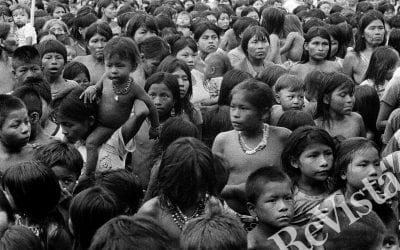Sculpture and Displacement
Doris Salcedo, The Materiality of Mourning
When I began working on the Harvard Art Museums exhibition “Doris Salcedo: The Materiality of Mourning” five years ago, I could not have anticipated that the opening would come just after the unexpected defeat of Colombia’s historic peace referendum, which set off political tumult and soul-wrenching in Colombia and the United States. The following week, right before the exhibit, President Juan Manuel Santos was awarded the Nobel Peace Prize. In response to these events, Salcedo organized a public act with more than 10,000 volunteers in the Plaza de Bolívar in Bogotá. They covered the sprawling plaza with 7,000 meters of white fabric, made up of 1,900 pieces, each bearing the name of a victim of the civil war, hand-sewn together by volunteers in an act of mourning and peace. Salcedo arrived in Cambridge just days after completing this extraordinary communal gesture with Colombians of all ages and backgrounds. She was emotionally and physically exhausted, but determined to install the exhibit in the days before the divisive U.S. elections. As it turned out, this exhibition opened at a moment in which it pointedly spoke to issues simmering within the current socio-political landscape of the United States and elsewhere in the world. Political violence, civil unrest and the far-reaching repercussions of societal ruptures inform the work Salcedo painstakingly creates.
This exhibition of Salcedo’s sculptures presents in spare, quiet but hauntingly powerful installations, a means for us to mourn and contemplate, to address and come to terms with human loss and the unsettling uncertainties of our homes, society and world when people choose to divide on issues central to the nation’s ideals. Ultimately, Salcedo’s practice—the impossible challenges she sets for herself by creating sculptures of temporal materials such as rose petals sewn into a room-sized tapestry, or by fusing one unlikely material with another, such as wooden furniture filled with cement—is about defying expectations by creating the possible against all odds and by finding the enduring human spirit within the bleak. We mourn, we remember, we continue to believe. And above all, we endeavor to create and realize what must be.
The importance of Doris Salcedo’s work lies not only in her remarkable skills as a sculptor, but also in the sociopolitical themes that she addresses and in the challenges that she poses to materiality and to the viewer, whom she dares to study her evocative works deeply and thoughtfully. At the time of this writing, the continuing crisis of civil violence; the widespread displacement of thousands of people fleeing conflict; the persistent attacks targeting public places such as schools, parks, and theaters; and the alienation and economic disparity dividing communities around the world has lent further poignancy to Salcedo’s project. Art will not solve these problems; however, it can make a statement and create a space where, as Salcedo herself remarked in an April 23, 2013, talk at the Harvard Art Museums, it “can inscribe in our life a different kind of passage, that is from suffering to signifying loss.” Art can help us acknowledge and learn from the injustice that has occurred and is occurring in this world—work that must be done if we are to move forward for the sake of humankind.
In addition to my respect for her commitment to tackling some of the most pressing sociopolitical concerns of our time, the weight of which she comes to understand personally through extensive interviews with the victims, my keen interest in Salcedo’s work stems from her ability to create pieces of remarkable aesthetic complexity that address these issues with quiet but forceful physicality. She stretches the capacities of materials, constructing a materiality that is difficult to comprehend and at times seems impossible: the sutured rose petals that don’t wither, the cement-filled furniture, the crumpled steel chairs— these pieces unnerve and compel the viewer to confront the immensity of the injustice that has transpired. There is nothing easy or readily accessible about her sculpture. They are difficult works, but from early on, I was certain that Salcedo’s project matters immensely, because she pushes the medium, she pushes the art of handwork, she pushes the accepted definition of the space that a sculpture should or even could inhabit, and she pushes the means by which a powerful sociopolitical statement can be expressed.
Salcedo also reimagines the way in which we mark remembrance. Her sculptures are not memorials—static, heroic monuments situated in a public site; articulated in the traditional materials of stone, marble or steel; impervious to climate. Instead, she takes materials that are recognizable as part of the everyday, touched by human hands or feet, such as furniture and cement, but transforms them in such a way that the resulting visual effect inspires one to pause, remember, and mourn the absence of those taken from this life. She creates objects and installations that are at once familiar and hauntingly changed. Rather than build a statue of a leader, martyr or victim whom we acknowledge as a specific participant in the violence, she creates a sculpture that conjures associations and provides a space for contemplating what and who was lost.
Salcedo’s memorial is a work in mourning; it is sculpture that, as the artist said in her April 2013 talk at the Harvard Art Museums, “attempts to give back the sense, meaning, and form that violence took away from its victims, the unmourned dead of the past.” Consequently, her works spark differing thoughts, associations, and emotions in each viewer, turning the traditional idea of the memorial on its head. Usually no individual names are given nor specific histories cited (Salcedo’s newest work, Palimpsest, is an exception, as it presents the names of victims that appear, disappear and then reappear). Her titles often reference historical or literary sources rather than contemporary events; but her works unequivocally address the need to mark the societal loss wrought by violence. It is up to the viewer to take the time to look closely, confront, and ponder what she has created. In Salcedo’s words, “I hope that my work can cross through history to make present the extreme experiences that lay forgotten in the past.”
Monumentality is conveyed in Salcedo’s work not only through the large scale of many of her sculptures and public installations (see Fig. 1), but in the enormous effort of the labor she undertakes to make her art by hand and in the materiality that results (Fig. 2). While many contemporary artists employ fragile and/or everyday materials in their work, Salcedo has chosen to focus on materials both unexpected and especially complicated to manipulate, form, and preserve in perpetuity. From her early use of cement, wood, and stainless steel with inclusions of fabric and hairs, to her decision in recent years to construct works with soil and grass or thousands of sutured rose petals, to her latest challenge—the mutability of water—she has tested the possibilities of materials. Time and again she creates a materiality that defies expectations. Her most recent works, including those presented in the Harvard Art Museums’ special exhibition, experiment with the physical lifespan and visual qualities of organic materials, and demonstrate Salcedo’s ability to transfer this materiality from the immense solid presence seen in her furniture works, to the vivid yet hauntingly evocative rose petal shroud, to the ethereal, specter-like needle shirts that seem to float over the wall. Her desire to make visible those lost to civil violence fuels her choice of material challenges. Salcedo speaks about her work “Palimpsest” in the book Doris Salcedo, edited by Julie Rodrigues Widholm and Madeleine Grynsztejn (Chicago: University of Chicago Press; Museum of Contemporary Art, 2015, p. 217).
She tells us “An aesthetic view of death reveals an ethical view of life,” and adds, “and it is for this reason that there is nothing more human than mourning.”
A version of this essay was first published in Mary Schneider Enriquez, Doris Salcedo: The Materiality of Mourning (Cambridge, Mass.: Harvard Art Museums, 2016), 137–140. © President and Fellows of Harvard College. The exhibition Doris Salcedo: The Materiality of Mourning is on view at the Harvard Art Museums through April 9, 2017.
Winter 2017, Volume XVI, Number 2
Mary Schneider Enriquez is the Houghton Associate Curator of Modern and Contemporary Art at the Harvard Art Museums. She curated the special exhibition Doris Salcedo: The Materiality of Mourning. She also curated the recent exhibition Mark Rothko’s Harvard Murals (2014–15), and played a major role in the reinstallation of the modern and contemporary galleries in the renovated and expanded Harvard Art Museums, which opened in November 2014. She directed the commission and installation of a public sculpture, Carlos Amorales’s Triangle Constellation, currently on display in the museums’ central courtyard. She has contributed essays to numerous exhibition catalogues, and has written extensively on contemporary art for ARTnews and ArtNexus magazines. She received her Ph.D. in the Department of History of Art and Architecture at Harvard, with a dissertation focused on the work of Colombian artist Doris Salcedo.
Related Articles
Displacements: Editor’s Letter
The sweet pure tones of a violin emanated through my grade school auditorium. Ten-year- old Florika, a refugee after the 1956 Hungarian Revolution, was turning the warmth of once- living wood into a powerful source of communication. Florika spoke no English…
36 Hours (and More) in Cartagena
I arrived in Colombia in August 2014 on a Fulbright grant to research La Liga de Mujeres Desplazadas (The League of Displaced Women), an organization formed in the late 90s in…
Voices from the Atrato River
A traditional panga boat with thirty passengers cruises the mighty waters of the Atrato River in the Pacific region of Colombia, doing a 142-mile route from Quibdó to…






